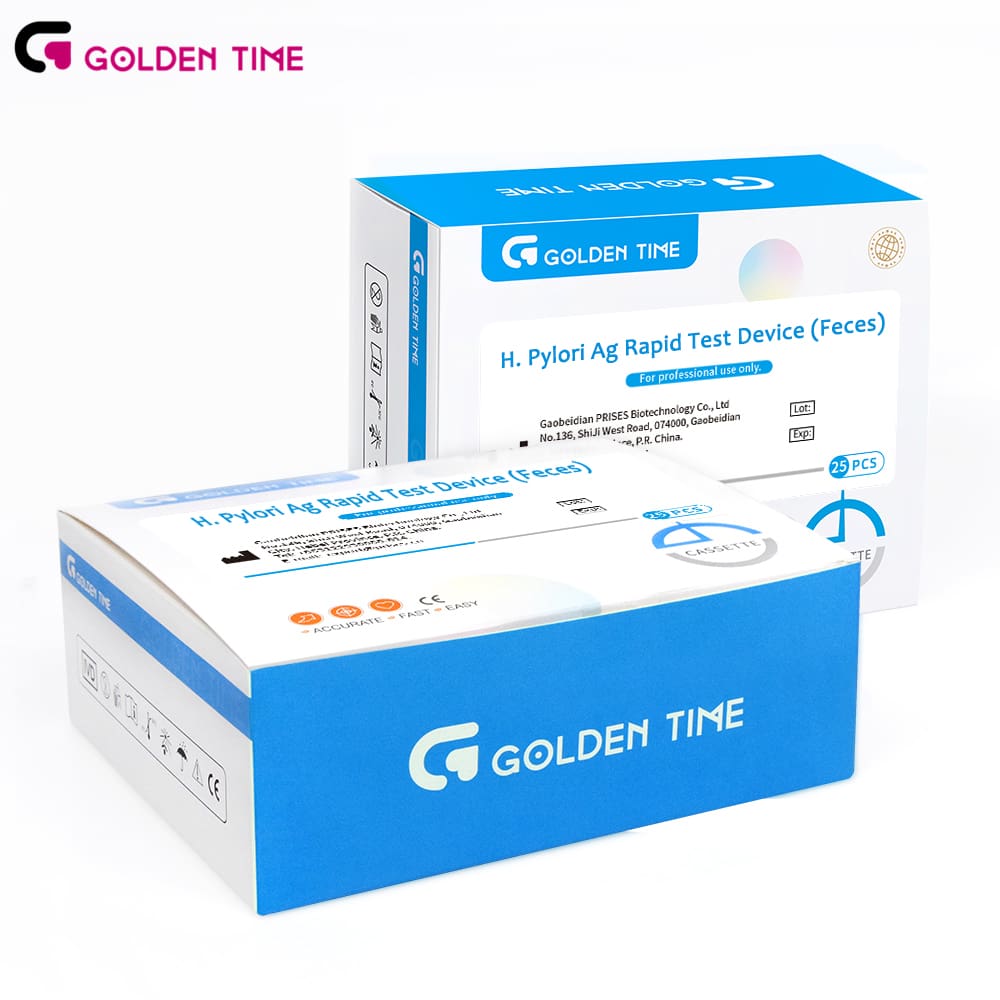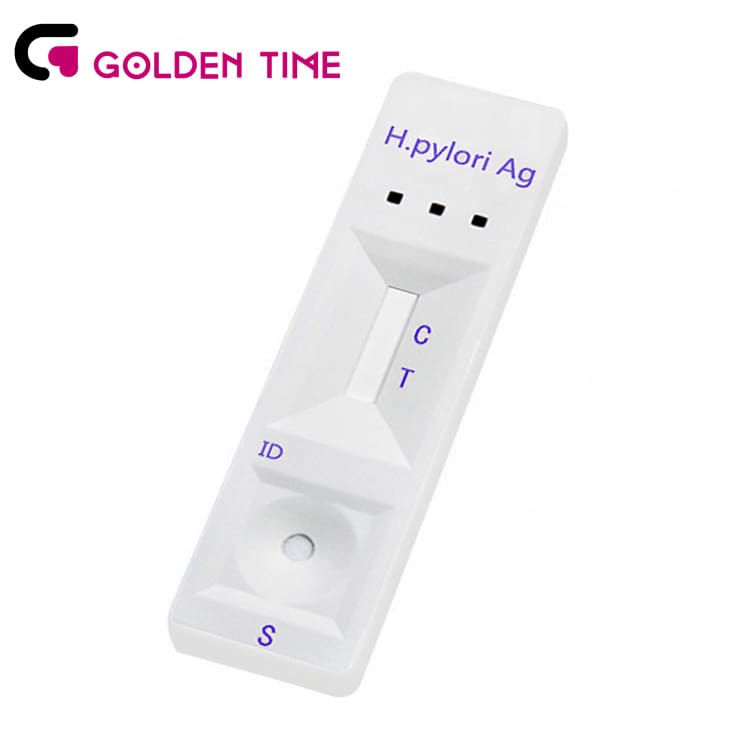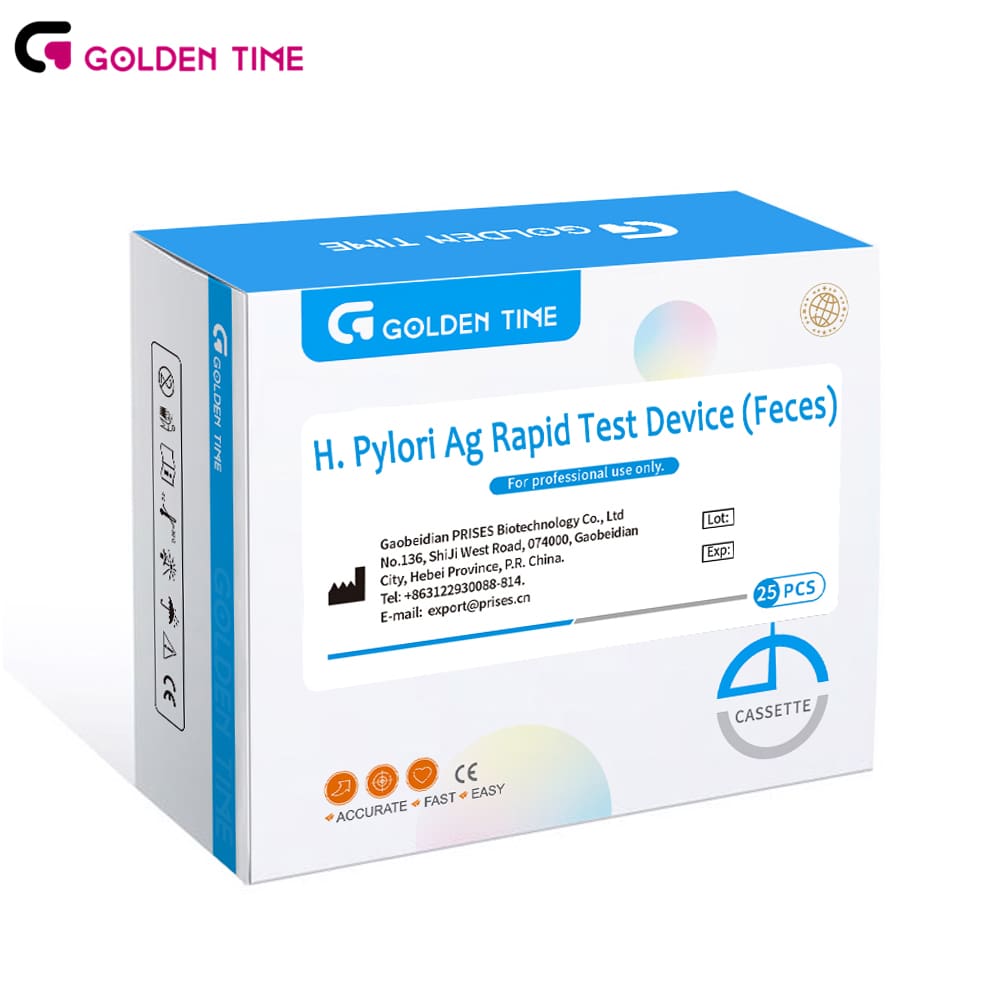Oct . 14, 2025 08:20 Back to list
h. pylori ag rapid test device for feces – fast, accurate
Inside the H.pylori Ag HP Feces Rapid Test Kit: field notes, specs, and what labs really say
If you’ve been around GI diagnostics for a while, you already know the stool antigen route is having a moment. The surge in outpatient screening, tele-gastro consults, and the shift from serology to antigen-based confirmation—yeah, it’s real. I’ve spent the past year talking with buyers and bench techs about the h. pylori ag rapid test device category, and one kit that keeps popping up is the H.pylori Ag HP Feces Rapid Test Kit from Prisesbio (Gaobeidian City, Hebei, China). To be honest, it’s the little workflow details that make or break adoption.

What it is and why labs care
This lateral-flow test qualitatively detects H. pylori antigens in feces to aid diagnosis—an immunochromatographic assay with monoclonal antibodies on a nitrocellulose membrane. It’s designed for professional use, not DIY kitchen-table diagnostics. Still, the read is simple, the footprint is small, and the workflow’s forgiving—assuming stool sampling is done right (always the caveat, right?).

Technical snapshot
| Product | H.pylori Ag HP Feces Rapid Test Kit (lateral-flow) |
| Specimen | Human feces (fresh or refrigerated per IFU) |
| Assay time | ≈10–15 minutes (read window around 15 min; real-world use may vary) |
| Analytical method | Immunochromatography with colloidal gold conjugate |
| Sensitivity / Specificity | ≈93–97% / ≈94–98% vs. urea breath or endoscopy+biopsy (site validations) |
| Storage / Shelf life | 2–30°C; 24 months (unopened), per stability data |
| Kit contents | Cassette, sample buffer, stool collection device, IFU; pack sizes 1T/5T/25T |
| Certifications | ISO 13485; CE-IVD (where applicable) |
Origin: No.136, Shiji West Road, Gaobeidian City, 074000, Hebei Province, P.R. China. I’ll note the packaging is sturdier than some generic cassettes I’ve seen—less crushed-box drama on arrival.

Process flow (what actually happens on the bench)
-
- Materials: nitrocellulose membrane, anti-H. pylori monoclonal antibodies, gold-labeled conjugate, sample buffer with surfactants/preservatives.
- Methods: collect stool with the supplied device; homogenize in buffer; add drops to cassette; capillary flow binds antigen to conjugate; line develops at test zone.
- Testing standards followed: CLSI EP12-A2 for qualitative tests; stability per ISO 23640; QMS under ISO 13485.
- Service life: unopened ≈24 months; opened components single-use only (obvious, but worth saying).
- Industries: hospital GI units, outpatient endoscopy centers, reference labs, community screening pilots.

Where it fits (application scenarios)
-
- Test-and-treat pathways per international consensus when breath tests aren’t feasible.
- Post-eradication monitoring, noting timing after therapy to avoid false negatives (many clinics target ≥4 weeks post-therapy).
- Resource-limited settings where instrument-free assays matter.
- Rapid triage in dyspepsia clinics—yes, even on a busy Monday.
Many customers say the h. pylori ag rapid test device reduces turnaround from days to minutes. One lab manager told me they trimmed median TAT from 48 hours (send-out) to 30 minutes in-clinic—surprisingly big morale boost for staff and patients alike.
Vendor comparison (my quick-take)
| Vendor | Sensitivity/Specificity | Certs | Lead time | Customization | Approx. price |
|---|---|---|---|---|---|
| Prisesbio | ≈93–97% / 94–98% | ISO 13485, CE-IVD | 7–15 days (stock-dependent) | OEM/ODM, pack size, IFU languages | Mid-tier |
| Vendor A (global) | ≈95–98% / 95–99% | ISO 13485, CE, some FDA 510(k) | 2–6 weeks | Limited label changes | Premium |
| Vendor B (regional) | ≈90–95% / 90–95% | CE-IVD (select markets) | 10–20 days | Basic branding | Budget |

Customization and support
OEM/ODM branding, multilingual IFUs, and 1T/5T/25T packaging are on the menu. Buyers told me the MOQ is reasonable, and tech support actually answers emails (I know—low bar). For quality, Prisesbio cites ISO 13485 and batch-level QC aligned to CLSI principles.
Real-world cases
-
- Community GI clinic: 320 tests/quarter; sensitivity 95.2%, specificity 96.1% vs. urea breath—reduced empiric PPI use by ~18%.
- Regional lab: switched from send-out to in-house; median cost/test down ≈28%, TAT down to under 1 hour.
- Field mission: no instruments, ambient storage; zero cold-chain failures reported over 6 weeks (n=400).
Bottom line: the h. pylori ag rapid test device isn’t trying to replace urea breath in every scenario, but it hits a sweet spot where speed, portability, and decent accuracy matter. Check your local regulatory status, follow timing post-therapy, and—actually—train on stool collection. It’s the unglamorous step that protects your specificity.
References
- ACG Clinical Guideline: Treatment of Helicobacter pylori Infection. American College of Gastroenterology. https://gi.org
- Maastricht VI/Florence Consensus Report on Helicobacter pylori management. Gut. https://gut.bmj.com
- CLSI EP12-A2: User Protocol for Evaluation of Qualitative Test Performance. Clinical and Laboratory Standards Institute. https://clsi.org
- ISO 23640: In vitro diagnostic medical devices—Stability evaluation of IVD reagents. International Organization for Standardization. https://www.iso.org
- WHO fact sheet: Helicobacter pylori. World Health Organization. https://www.who.int
-
Serology Syphilis Test: Global Importance and Latest Diagnostic Advances
NewsNov.20,2025
-
Diagnose Syphilis Test – Essential Screening & Diagnostics Explained
NewsNov.19,2025
-
Comprehensive Guide to Diagnosis Syphilis Test Technologies & Applications
NewsNov.19,2025
-
Comprehensive Guide to Syphilis Test Dubai – Early Detection & Reliable Screening
NewsNov.18,2025
-
Comprehensive Guide to Syphilis Test Diagnosis: Global Impact and Advances
NewsNov.18,2025
-
Syphilis Test Cost Explained: Affordable Diagnostics for Global Health
NewsNov.17,2025

